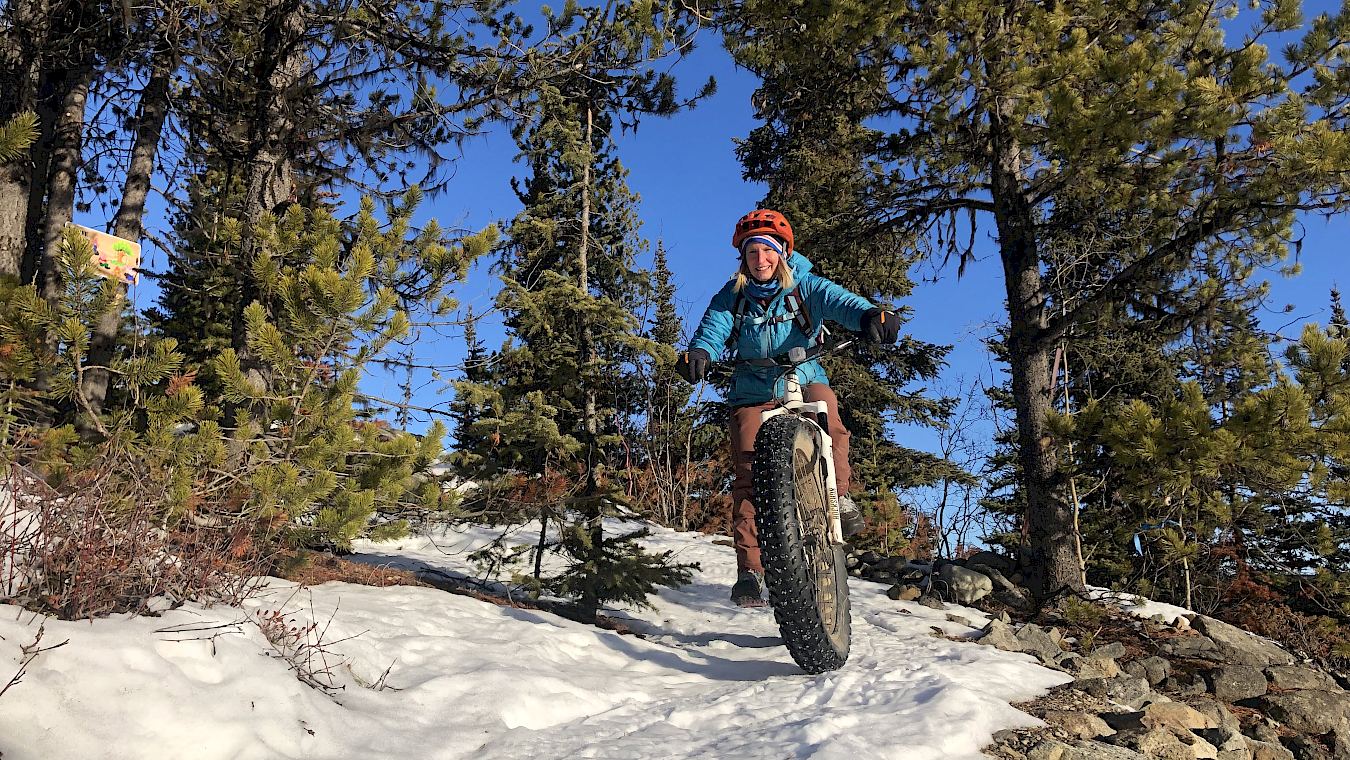
Fat Biking in Burns Lake: A Winter Love Story
As I type on my phone, the autocorrect feature changes “Fat Biking” to “Failing” which, when I think about it, is symbolic of the numerous misunderstanding’s particular to this strange and evolving sport.
Why is it called a fat bike and not a fat-tire bike? Was it designed to ride in snow or sand? Is it compulsory to eat granola and love suffering before picking up a bike? Are studded tires mandatory or just an expensive accessory? At what frigid temperature should men rummage through their sock drawer for a single extra sock to prevent “freezer-wiener burn”? And, most importantly, do these 5.5” tires make my ass look smaller?
I don’t claim to be a definitive source on the history of fat biking but, as a winter devotee of extending my riding season since 1990, I can shed some light on its evolution in Burns Lake, BC. I started winter riding when I bought a set of tire chains for my mountain bike. After the 3 hours it took me to wrestle the chains on my 1.5” tires without wrapping them around my cantilever brakes, I was able to risk life and limb on plowed logging roads or on hardened snowmobile tracks on frozen lakes. Additionally, I could commute to work behind snowplows and, for no extra charge, learn how to surf slush whenever a logging truck passed me on the highway. To say the least, this was not ideal.
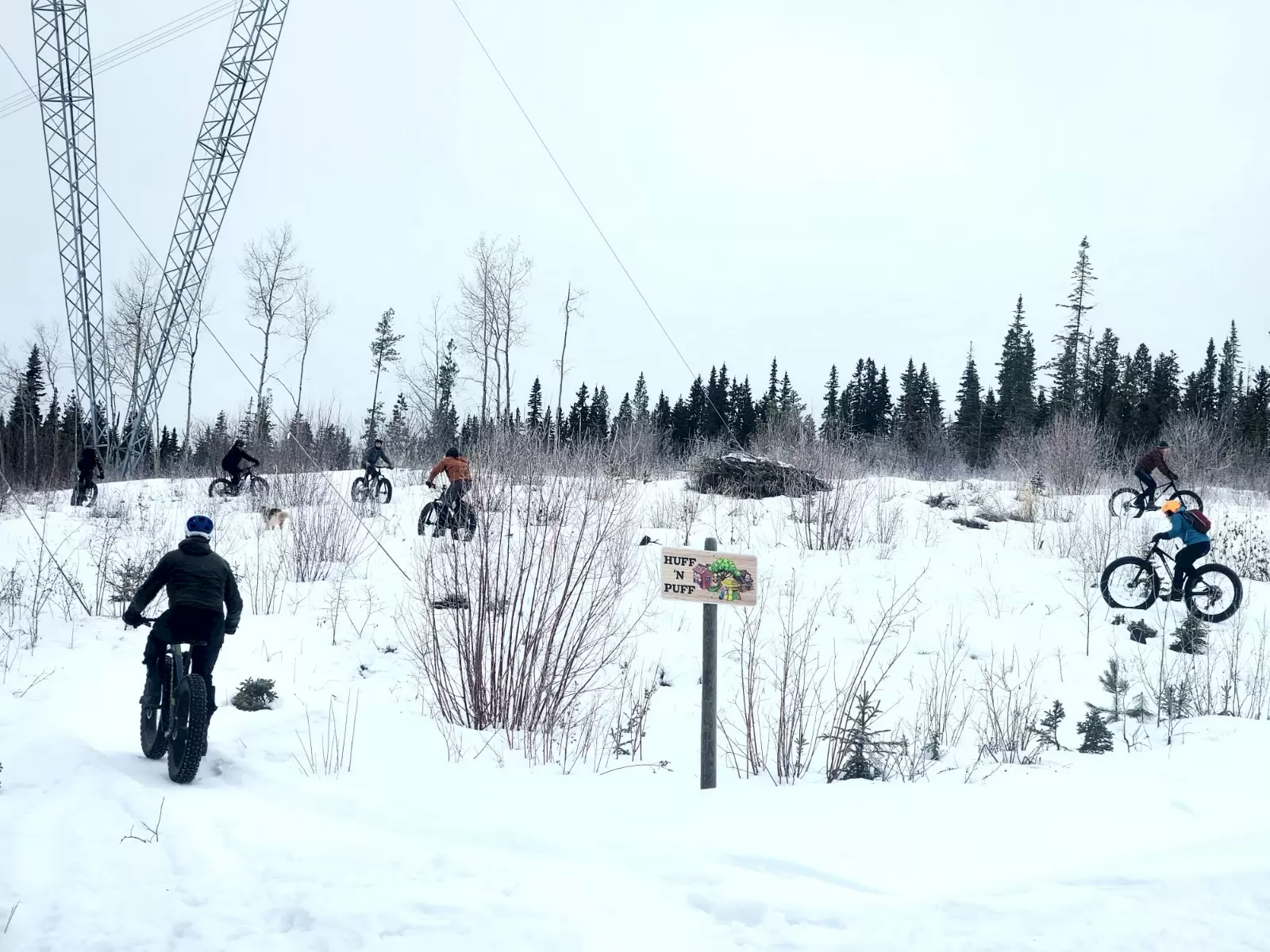
Enter the Fat Bike. Dave Sandsmark (Trail guru, part mountain goat, and owner of Burnt Bikes) brought a bevy of beautiful black bikes appropriately named “Bigfoot” from Norco to the showroom floor. These bad boys had double-wide rims with generously spaced forks that could accommodate the then huge 3” wide rubber tires. Could year-long mountain biking in Northern BC finally be here? Were we going to trade in our skis for wheels as we surf down a snowy “When Pigs Fly” on our new Fat bikes. Not so fast bucko.
It seems that Fat biking on anything other than a groomed trail (except in rare “crust-snow” conditions where it is f&%ing magical!!) is pretty much a no-go. I mean that literally- you can’t go anywhere. We got over our disappointment and realized that we needed to figure out how to groom a proper trail so that we could keep the tires moving.
Snowshoeing in a trail became the obligatory first step of any grooming procedure. A group of walkers sporting “misery slippers” provide the initial trail-bed through a trail that would eventually become rideable. Next came the “misery-sled”. This heavily weighted toboggan was attached to a backpack and provided the user with unlimited aerobic and anerobic training that would make Sisyphus proud. If it wasn’t “cruel and unusual punishment”, we would have proposed that prisoners pull the sled for a reduced sentence. I guess that it was going to be up to our little band of volunteers to make these trails.
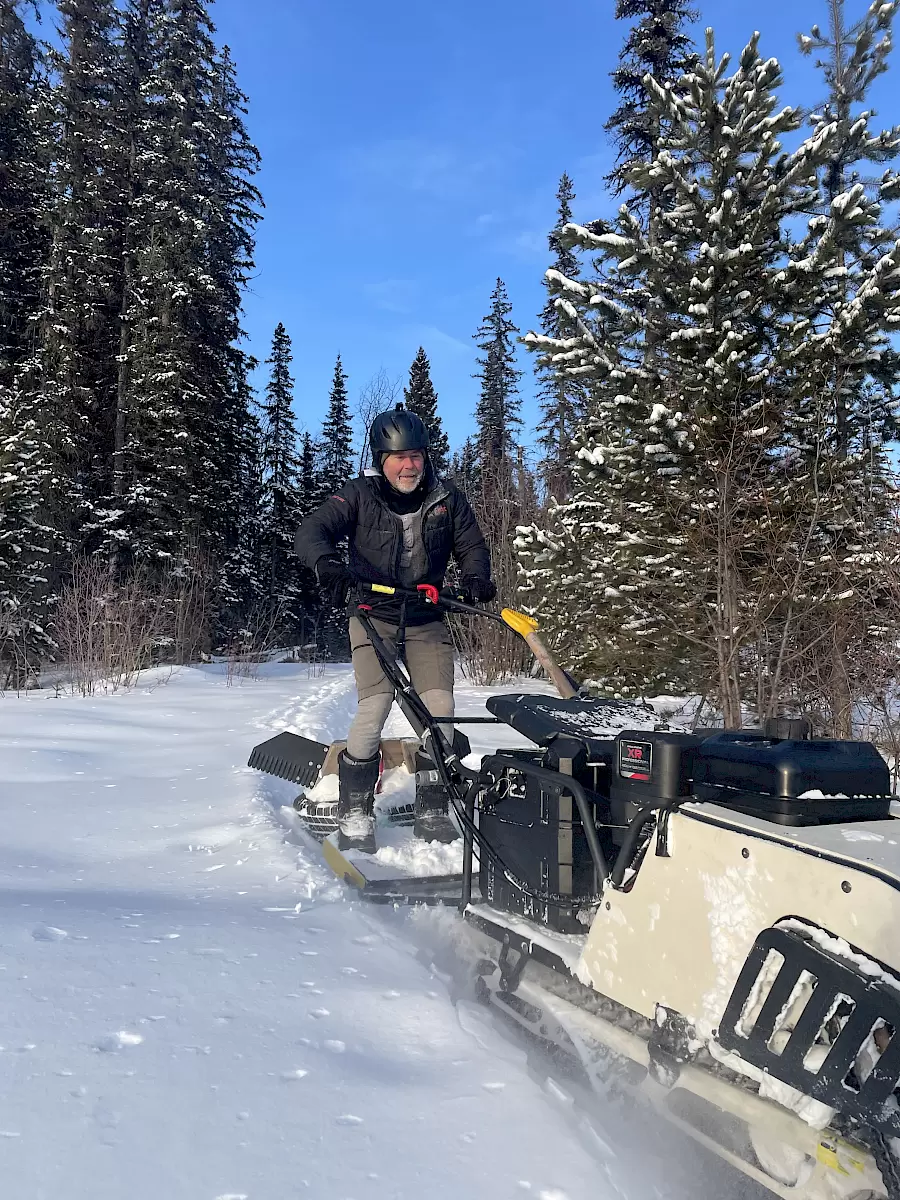
A few years of pulling this torture-device had us looking for some other solutions. Full disclosure- 98% of the pulling was handled by Dave but the rest of us couldn’t imagine continuing the other 2% without some mechanical assistance. Enter the Rokon. For the uninitiated, the Rokon is to a motorcycle what a fat bike is to a mountain bike- a fatter, slower beast of burden. Attached to the two-wheel drive Rokon is a specific Fat bike groomer that is weighted and leaves behind a lovely corduroy path. Thus began the era of “riding the endless white skinny”. Finally, we graduated to the “Snow Dog”, a ride-from-behind snow machine that is more maneuverable and manageable than the Rokon. We can now groom pretty much anywhere during the winter and finally realize the winter dream of Fat Biking on summer mountain biking trails.
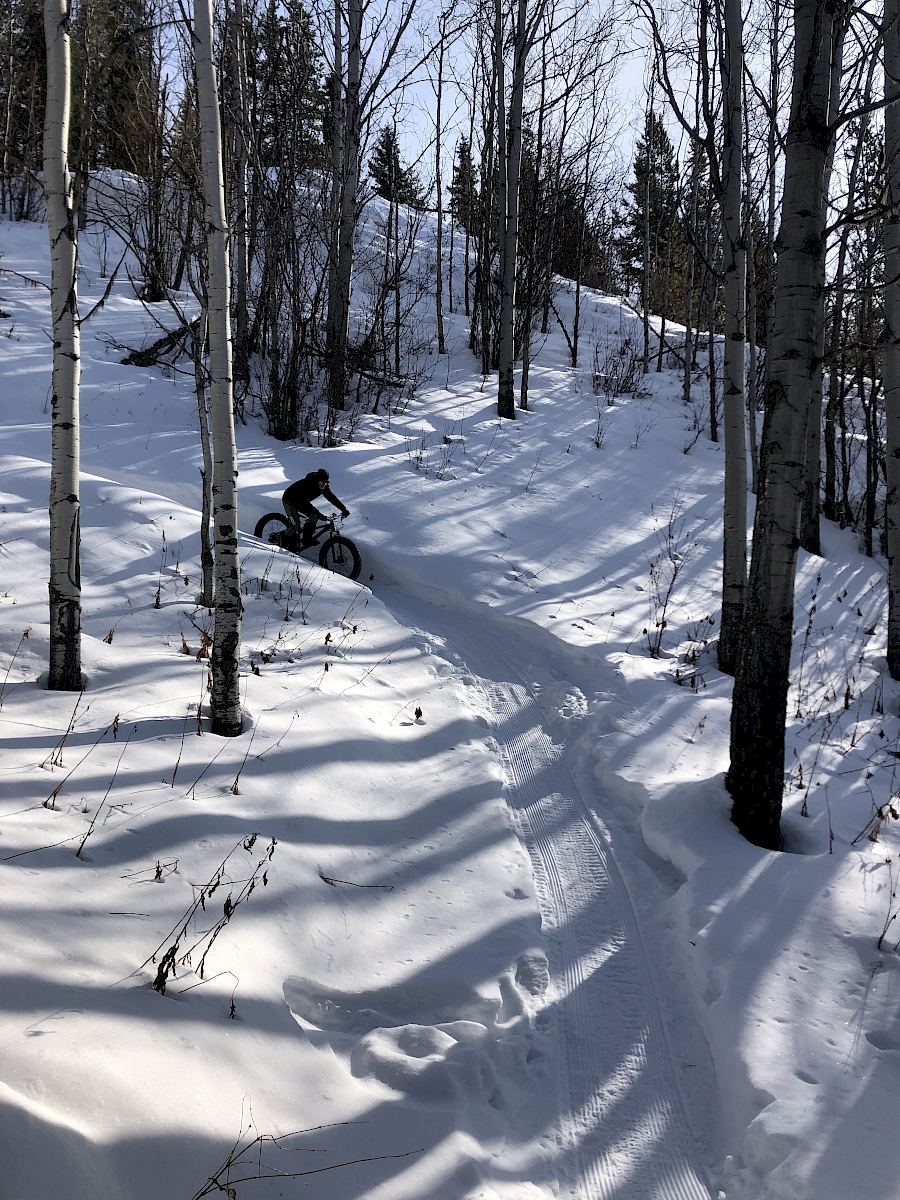
This brings us to the unique gem that is Burns Lake. While other bike areas have also discovered the transformative qualities of a Snow dog, they don’t have Dave. Well, they probably have a Dave, but they certainly don’t have our Dave. This Dave sacrifices life and limb to groom our vast network of narrow single-track trails teasing the mechanical marvel through narrow trees, guiding the sled and groomer gingerly over precipitous cliffs, all the while keeping on top of mother nature immediately after she lovingly sprinkles the snow that keep us Fat bikers so wonderfully enthused. It is this vertical quality that sets Burns Lake apart from the many Fat biking areas that meander through flat open fields, lakes, and frequently share a portion of cross-country ski trails with their reluctant spandex brethren. Here, we can climb 13 kilometers on a gentle Up Track to the summit of Boer Mountain (2,500 vertical feet) without dabbing (putting a foot down) and descend at sphincter-tightening speed down an actual downhill mountain biking trail.
Does this sound like a soul-crushing sport for the masochistic enthusiast?
Hardly.
Is Fat biking during the winter the equivalent of Shamu mindlessly slogging in a counterclockwise direction in an empty flat landscape devoid of views and thrills?
Not here.
Can you too buy a Fat Bike and continue the adrenaline-soaked mountain biking experience in the wintertime?
Absolutely.
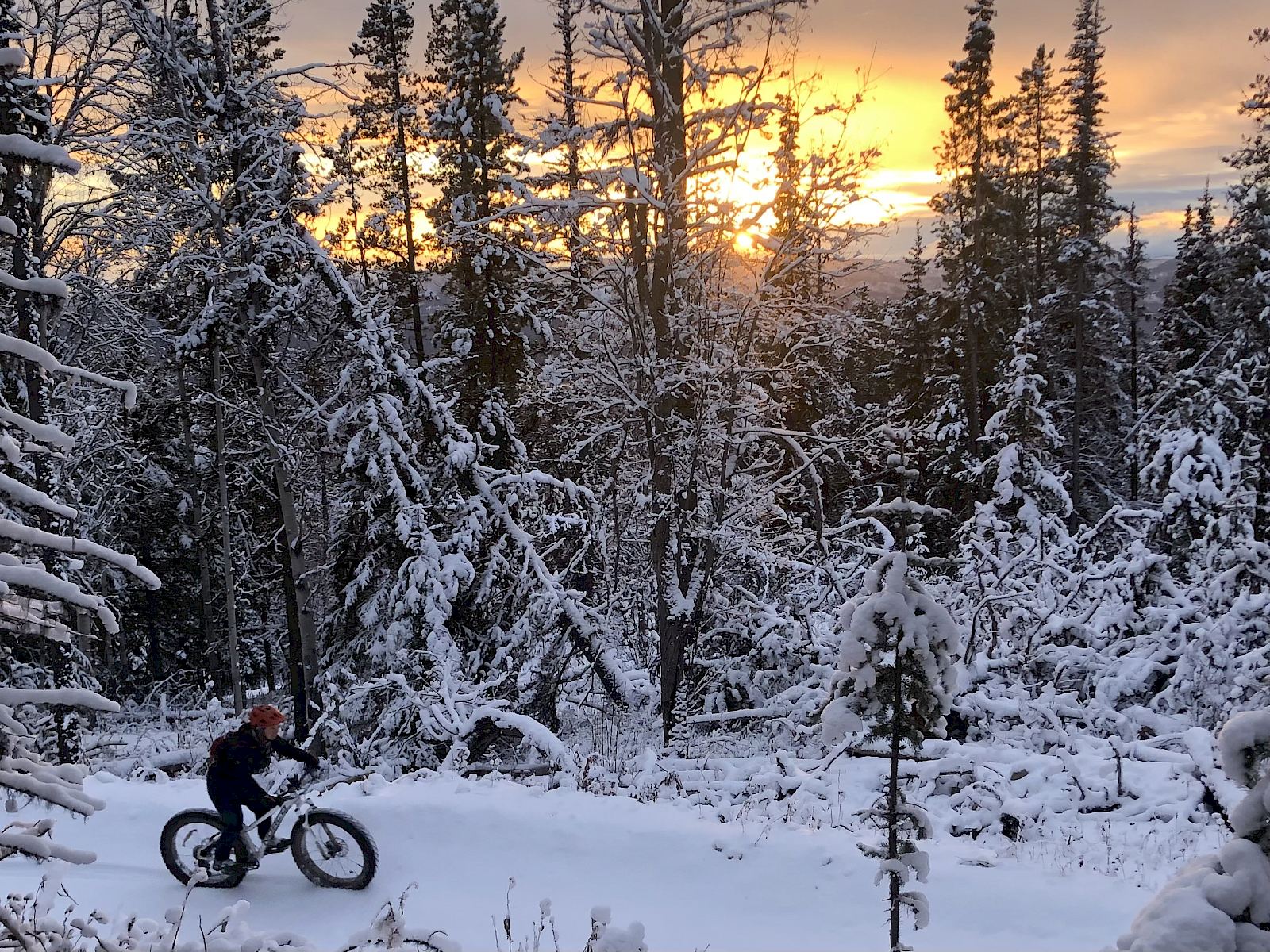
The Village of Burns Lake is located on the traditional, ancestral and unceded territory of the Carrier Sekeni people which includes the Wet'suwet'en First Nation, Lake Babine Nation, and Ts'il Kaz Koh (Burns Lake Band). They have been custodians of this land for thousands of years and we would like to pay our respect to their Elders and knowledge keepers both past and present.
